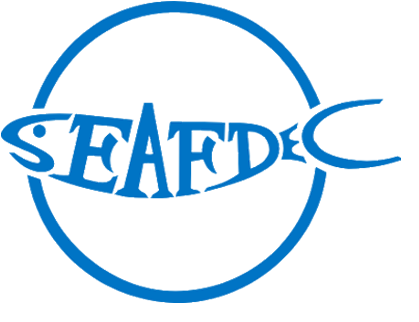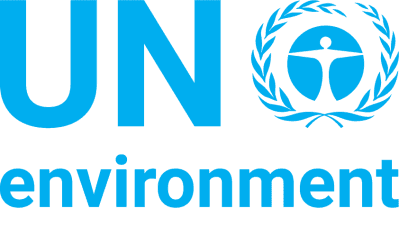Background & Situation Menu
Status and Trends in Fisheries and their Habitats Threats, root causes and barrier analysis Institutional, sectoral and policy context Stakeholder mapping and analysis Baseline analysis and gaps Known Areas of Critical Significance to the Life-Cycles of Fisheries Resources Priority Fisheries Refugia Areas




Establishment of Fisheries Refugia in Viet Nam:
Background and Situation Analysis to Support
Status and Trends in Fisheries and their Habitats
Viet Nam is situated in the tropical monsoon area of South East Asia. It has a coastline of 3260 km and an exclusive economic zone (EEZ) of more than 1 million km2. At present, the fisheries sector plays an important role in the social and economic development of Viet Nam. Total fisheries production has been estimated to exceed more than 2 million tonnes of which close to 75 percent is from capture fisheries. This production contributes significantly to GDP and export earnings. Vietnamese waters have many bays, lagoons, and estuaries, including Ha Long Bay, Bai Tu Long Bay, and Tam Giang lagoon, and over 150,000 ha of mangroves. There is a high potential for the development of capture fisheries, marine aquaculture, and other economic sectors, including transportation and tourism. There are over 2,030 fish species in Vietnamese waters, of which approximately 130 species have economic value, 1,600 crustacean species, 2,500 species of mollusk, and many other kinds of seaweed and seabirds. The standing stock of fisheries resources is estimated to be 3.1 to 3.3 million tonnes, with a potential yield of approximately 1.4 to 1.5 million tonnes.
The fisheries sector is currently Viet Nam’s third-biggest exporting sector, after crude oil and garments. This sector provides about 40% of the animal protein in the diet of Vietnamese people, creates jobs for over 4 million laborers, and provides part-time income for millions of people. However, the fisheries sector is facing many difficulties, largely due to capture fisheries in Viet Nam being mostly small-scale. For instance, 84% of fishing boats have a capacity of less than 90 hp, and fishing activities mainly take place in nearshore areas causing higher fishing pressure, resulting in the overexploitation and severe decline of living resources. In this setting, the income of fishing boat decreases, and competition among them increases, resulting in resources becoming increasingly exhausted. Therefore, it is necessary to orient the development of fisheries in the right direction by strengthening coastal fisheries management, and developing offshore fisheries in a sustainable manner.
Among the 2030 marine fish species in Viet Nam’s waters, approximately 70% of these are demersal and semi-demersal fish, with the remaining 30% being pelagic species. The distribution of dominant species varies by area. The main species by areas are as follows. Tonkin Gulf: Ponyfishes (Leiognathus spp.), glow-belly (Acropoma japonicum), threadfin porgy (Evynnis cardinalis), roundscad (Decapterus maruadsi), and splendid squid (Loligo chinensis); Central and middle area of the South China Sea: Skipjack tuna (Katsuwonus pelamis), yellowfin tuna (Thunnus albacares), common dolphinfish (Coryphaena hyppurus), bigeye tuna (Thunnus obessus), swordfish (Xiphias gladius), and silky shark (Carcharhinus menisorrah); Southeast area: Japanese leatherjacket (Monacanthus nipponensis), red bigeye (Priacanthus macracanthus), bensasi goatfish (Upeneus bensasi), cuttlefish (Sepia spp.), squid (Loligo spp.), and octopus; and the Southwest area: Frigate tuna (Auxis thazard), short mackerel (Rastrelliger brachysoma), goatfish (Upenus bensasi), squid, cuttlefish, pike conger and trevallies (Carangidae spp.).
There is a large and increasing number of small fishing boats operating in Viet Nam’s coastal waters. The corresponding increases in fishing effort and total catch have led to the overexploitation of fisheries resources in these areas. Consequently, for each unit increase in fishing effort in Viet Nam’s coastal waters, the income of fishers per unit of effort diminishes. In order to maintain financial returns on their investments in time and effort, fishers typically intensify their operations by increasing fishing duration, increasing the number of gear operations, and reducing mesh size. This often further contributes to the problem of overexploitation, driving further increases in fishing effort. Approximately, 80 percent of Viet Nam’s total marine catch is derived from waters less than 50 m deep. The overexploitation of coastal fisheries resources has the following consequences:
The proportion of high-value fish species in catches is gradually reduced.
The sizes of individual high-value fish in catches become smaller over time.
The proportion of trash fish (very low-value fish) in catches tends to increase.
This drives fluctuations in the price per kg and the value of the catch. The prices obtained for species of high commercial value, especially coral-associated species such as grouper, eel, and lobster, have recently increased significantly. The price of other commercial species, including yellowfin tuna, snapper, and mackerel, have also increased. However, the price for these latter species is not stable due to fluctuations in market supply and demand. Due to ongoing reductions in catch rates, the quantity of high-quality fish, the size of fish, and income per fishing trip has declined.
Viet Nam’s fisheries are small-scale, multi-species, and multi-gear. The majority of investment in these fisheries is private. These small-scale fisheries contribute more than 87% of the total catch. Some 640,000 Vietnamese people are engaged in fishing, including approximately 60,000 people participating in offshore fishing activities. The development of state-owned fishing enterprises has not been effective due to insufficient management capacity and lack of investment. The educational level in every Vietnamese fishing community is low. It is estimated that: 68 percent of people in these communities only finish primary school; slightly more than 20% complete lower secondary school; about 10% finish secondary schools; and only 0.65% have graduated from vocational schools or universities.
The following socio-economic conditions influence the quantity and quality of fishery laborers in Viet Nam:
Coastal fisheries in all areas of Viet Nam face the threat of overexploitation. There is a need to introduce strict measures aimed at reducing fishing effort in coastal waters. However, many fishers cannot afford to purchase fishing boats suitable for offshore use due to a lack of sufficient capital. Therefore, a continuously growing number of coastal and inshore fishers exacerbate existing conditions.
Marine fishing is a customary and hereditary profession in Viet Nam. Fishers normally do not have any other sources of income. Compared to agriculture, incomes associated with fishing are typically higher. This situation attracts many laborers to this sector.
Due to low levels of education, it is difficult for fishers to learn about advanced technology, especially offshore fishing techniques. Similarly, finding employment in other areas is often a major challenge for small-scale fishers.
The decline in fisher incomes, associated with the degradation of coastal resources, has driven fishers to increase the efficacy of fishing effort. This has involved fishers:
- reducing mesh size to catch fish of all shapes and sizes, including juvenile fish;
- increasing the number of gear operations per trip, or extending the duration of fishing; and
- using destructive fishing gears or methods, including explosives, chemicals, and other poisonous substances.
In the reduction of overall fishing effort exerted in coastal waters, there is a need to create alternative employment opportunities for fishers.
Detailed baseline assessment: a comprehensive report on fish stocks and habitats of regional, global, and transboundary significance in South China Sea waters of Vietnam was produced as part of fisheries component activities of the UNEP/GEF South China Sea project. This assessment presents available information and data relating the status and threats of important fish stocks, habitats and areas of importance in the maintenance of exploited fish stocks, and existing management regimes, which was used in the planning of national-level actions for the SEAFDEC/UNEP/GEF project entitled “Establishing and Operating a Regional System of Fisheries Refugia in the South China Sea and the Gulf of Thailand” (Fisheries Refugia Project). It is anticipated that this assessment will be updated with new and additional information generated during the implementation of the Fisheries Refugia Project. It will also act as an important reference for determining the effectiveness of management interventions supported by the project.